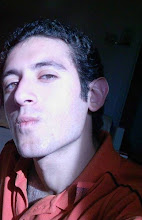It all started when Khedive Ismail, who was involved in the building of the Suez channel - made the decision that the Suez Channel had to have a large statue at its north entrance. He took contact with a French sculptor named Frederic Auguste Bartholdi, and the artist started the work on the statue, which should represent an Egyptian Farmer woman holding a torch in her hand to guide the seafarers safely to the gate of the channel.Frederic Auguste Bartholdi finished the model in time (not as Verdi who was a year late to the opening of the Suez Channel with his Opera Aida). Problem was that Khedive Ismail was mildly speaking a "big spender" - as Alan Moorehead states quite clearly in his book "The White Nile":"It was not only honest men like Baker and Gordon who were attracted to his service; a plague of speculators descended upon Egypt as well and the easily contrived to get rid of Ismail's money even faster than he borrowed it. In round figures the Egyptian national debt was £3,000,000 at Ismail's accession, and before long he managed to convert his into a deficit of £100,000,000 - and this at a time when the pound was worth two or three times what it is today."Add to above facts that Khedive Ismail also  had political conflicts with France and England and did not get another loan to build the statue. The correspondence between Egypt and the artist show that when the Suez Channel was opened in 1869 the sculpture was still a model in the artist studio.When Bartholdi later was asked to design a sculpture to celebrate the American Declaration of Independence, to be ready in the year 1876 - funds was again a problem. So the statue made for Khedive Ismail was used, the torch changed hand and some other small alterations where made.The result is that it's an Egyptian farmer women who stand in New York as the symbol of Liberty. Another example of Egyptian reflections in US.
had political conflicts with France and England and did not get another loan to build the statue. The correspondence between Egypt and the artist show that when the Suez Channel was opened in 1869 the sculpture was still a model in the artist studio.When Bartholdi later was asked to design a sculpture to celebrate the American Declaration of Independence, to be ready in the year 1876 - funds was again a problem. So the statue made for Khedive Ismail was used, the torch changed hand and some other small alterations where made.The result is that it's an Egyptian farmer women who stand in New York as the symbol of Liberty. Another example of Egyptian reflections in US.
Subscribe to:
Post Comments (Atom)

No comments:
Post a Comment